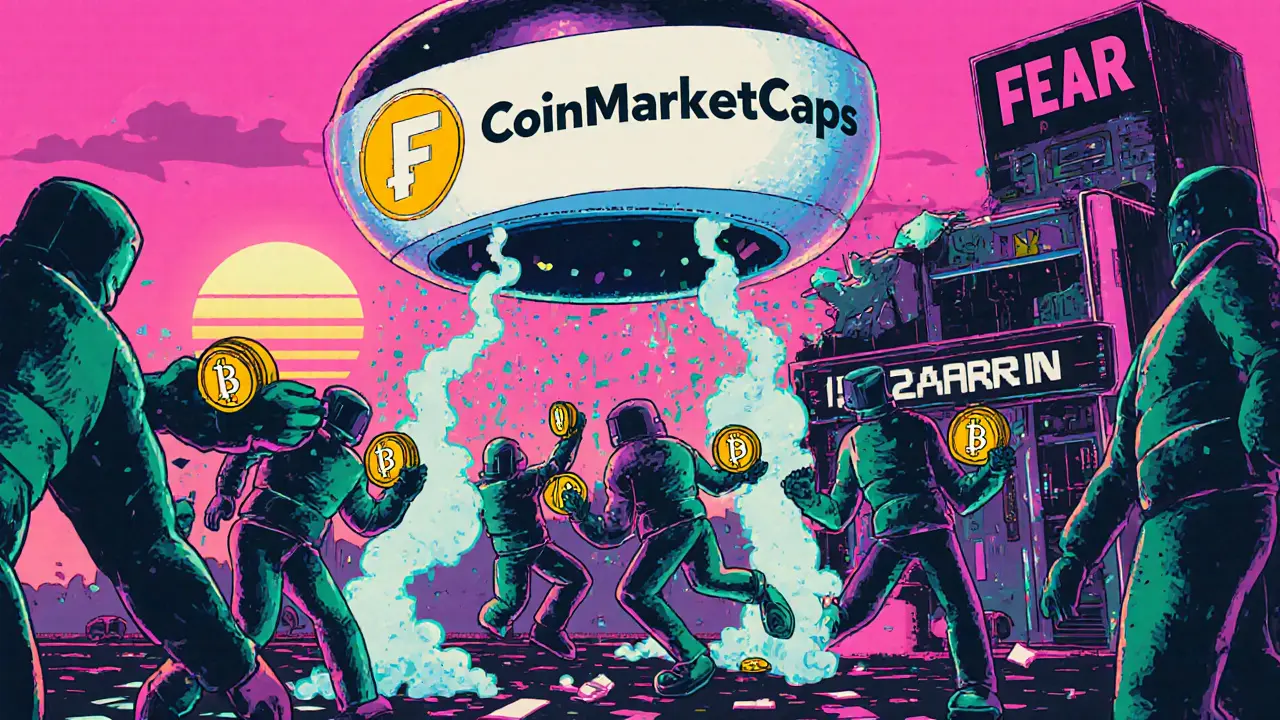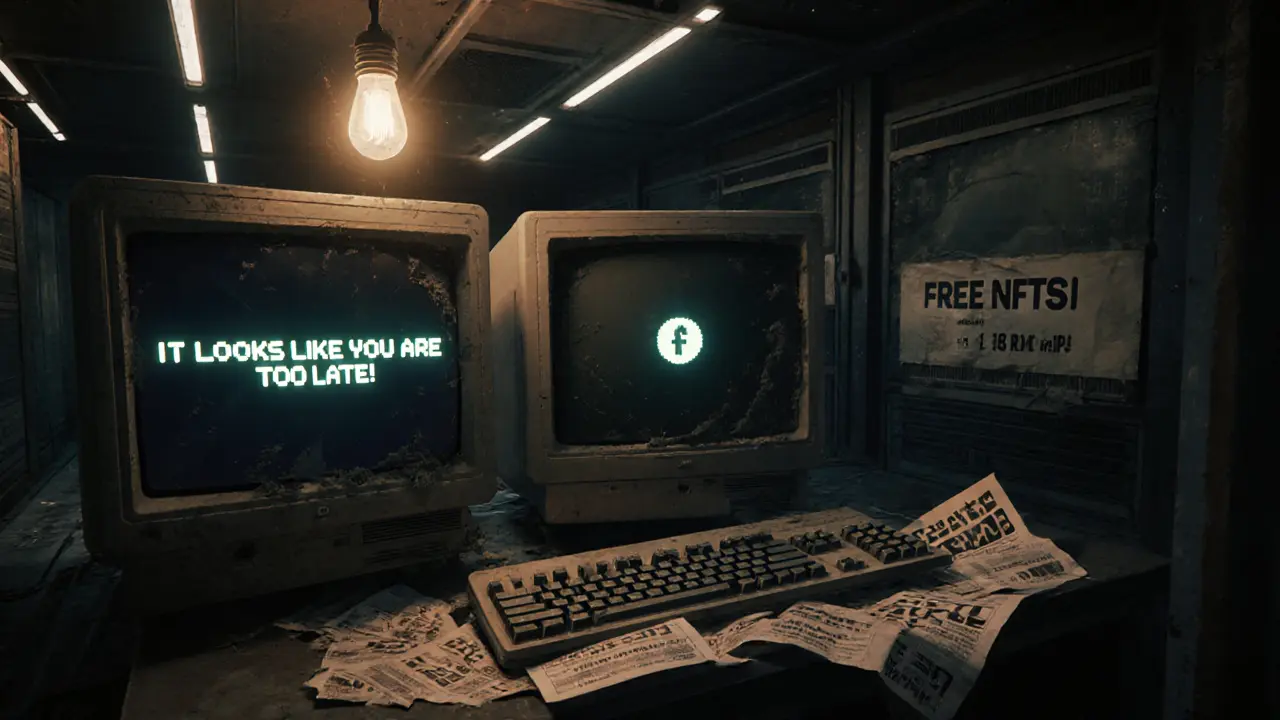FEAR Play2Earn NFT Tickets Airdrop: What Happened and Why It’s Closed
 Nov, 14 2025
Nov, 14 2025
Airdrop Legitimacy Checker
Use this tool to evaluate whether an airdrop is legitimate or potentially fraudulent based on the key criteria from the FEAR airdrop case study. Answer the questions below to receive your assessment.
Back in 2021, the blockchain gaming world buzzed with talk of free NFT tickets that could turn into real cash. FEAR NFT Games rolled out a Play2Earn NFT tickets airdrop - and for a short time, it looked like a golden opportunity. But today? It’s gone. Closed. No more claims. No more waiting in line. If you missed it, you missed it. And here’s what actually happened.
What Was the FEAR Play2Earn NFT Airdrop?
FEAR NFT Games, a small blockchain gaming startup, partnered with CoinMarketCap to hand out 2,000 digital tickets. Each ticket was worth 25 FEAR tokens - that’s $25 worth of crypto at the time, based on the token’s price. These weren’t just collectibles. They were keys to a Play-to-Earn game that hadn’t even launched yet. The idea? Give people a reason to try the game before it went live. Reward early testers. Build a community.
The airdrop wasn’t random. You had to sign up through CoinMarketCap’s platform, connect your wallet, and complete a few simple tasks: follow FEAR on Twitter, join their Discord, and maybe share a post. Nothing too crazy. But it worked. Thousands signed up. The project called it a “huge success.”
Then Came the Bigger Airdrop
Not long after, FEAR dropped a second wave - bigger this time. The “FEAR x CoinMarketCap” campaign gave away 20,000 $FEAR tokens, worth around $30,000 USD back then. Over 500 winners were selected. This wasn’t just for early adopters. It was open to anyone who had shown interest in Play-to-Earn games. The goal? Flood the ecosystem with users. Get people hooked on the idea that gaming could pay.
The campaign ended on September 24, 2021, at 2 PM EST. Winners were notified via email and wallet alerts. The tokens were distributed. The game? Still not ready.
Why Did the Airdrop Die?
Here’s the uncomfortable truth: the game never launched properly.
FEAR NFT Games raised $1.24 million across four funding rounds. That’s real money. But the project didn’t scale. No public roadmap. No updates. No playable demo. The website, once full of promises, now just says: “It looks like you are too late! The airdrop is closed.” That’s it. No explanation. No apology. No new token utility.
The FEAR token’s market cap dropped from a peak of $117,470 to near zero. Trading volume vanished. The Discord server went quiet. Twitter posts stopped. The team disappeared.
This isn’t rare. In 2021, every crypto startup claimed to be building the next Axie Infinity. Most didn’t. They raised money, ran an airdrop, got attention, and vanished. The FEAR airdrop was never about the game. It was about getting tokens into as many wallets as possible - then moving on.

What Did People Actually Get?
If you won one of the 2,000 tickets, you got 25 FEAR tokens. If you won in the second campaign, you got a share of 20,000 tokens. But here’s the catch: those tokens had no use.
There was no game to play them in. No marketplace to sell them. No staking. No governance. No utility. Just a number in your wallet. And as the price of FEAR dropped from $1 to under $0.01, those tokens became worthless.
Some people sold them immediately. Others held on, hoping the game would launch. It didn’t. Now, those tokens sit in wallets like digital ghosts - reminders of a promise that never came true.
How This Fits Into the Bigger NFT Airdrop Trend
The FEAR airdrop wasn’t unique. It was textbook. Back in 2021, Play-to-Earn was the hottest trend. Investors poured money into any project with “NFT” and “earn” in the name. Airdrops became the go-to marketing tool. Why pay for ads when you can give away free tokens and get thousands of new users overnight?
Projects like Axie Infinity, Gala, and Illuvium used airdrops smartly. They built real games. They kept updating. They gave users real reasons to stick around.
FEAR didn’t. It used the same playbook - but skipped the part where you actually build something people want to play. It’s a cautionary tale. Airdrops aren’t free money. They’re a test. If the project can’t deliver after the hype, the tokens mean nothing.
What You Can Learn From This
If you’re thinking about jumping into the next big airdrop, here’s what to check before you sign up:
- Is there a working demo? Can you actually play the game? Or is it just a whitepaper and a Discord server?
- Who’s behind it? Are the team members known? Do they have a track record? Or are they anonymous?
- What’s the token for? Does it unlock gameplay? Voting? Rewards? Or is it just a speculative asset?
- Is there a roadmap? Are there clear, dated milestones? Or just vague promises like “coming soon”?
- Are people talking? Check Reddit, Twitter, and Discord. Are users excited? Or are they asking the same questions you are - with no answers?
Airdrops can be a great way to get started in Web3. But they’re not a shortcut to riches. Most of them fail. The ones that succeed? They earn your trust by delivering real value - not just free tokens.

Is There Any Way to Get FEAR Tokens Now?
No. The airdrop is permanently closed. The official website no longer accepts sign-ups. The CoinMarketCap page for the campaign is archived. The FEAR token is no longer listed on major exchanges. Even if you find it on a decentralized exchange, there’s no liquidity. No buyers. No value.
If you still hold FEAR tokens from the airdrop, they’re essentially digital trash. No one’s buying. No one’s using them. The project is dead.
What Happened to FEAR NFT Games?
The company hasn’t made a public statement since late 2021. No blog posts. No Twitter updates. No GitHub commits. No team member has spoken out. Their social media accounts are frozen in time. The domain still exists, but it’s just a placeholder. No contact info. No support. No future.
In the crypto world, silence is the loudest signal. When a project vanishes like this, it’s not a pause. It’s an end.
Final Thoughts
The FEAR Play2Earn NFT airdrop was never about gaming. It was about hype. It was about grabbing attention before the next bubble popped. And like so many others in 2021, it burned bright for a few months - then went dark.
If you missed it, don’t regret it. You dodged a bullet. The real winners weren’t the people who got the tokens. They were the ones who walked away before the crash.
Next time you see a “free NFT airdrop,” ask yourself: Is this building something real? Or just collecting wallets?
Was the FEAR airdrop real or a scam?
It wasn’t a scam in the legal sense - no one stole your money. But it was a classic case of vaporware. The team raised funds, ran a successful marketing campaign, gave out tokens, and then vanished. No game, no updates, no communication. That’s not fraud - it’s abandonment. And in crypto, that’s just as damaging.
Can I still claim FEAR tokens from the airdrop?
No. The airdrop closed in September 2021. The official website and CoinMarketCap campaign pages are inactive. Even if you find a link claiming to still distribute tokens, it’s a phishing site. Do not connect your wallet.
What happened to the FEAR token price?
The FEAR token peaked around $1 during the airdrop hype. By early 2022, it dropped below $0.05. Today, it trades at fractions of a cent - if it trades at all. Most exchanges delisted it due to zero volume. The token has no utility, no demand, and no future.
Are there any active Play2Earn NFT games today?
Yes, but they’re rare. Projects like Illuvium, Star Atlas, and Pixels have kept going by focusing on gameplay, not just token rewards. They update regularly, listen to players, and build real economies. The ones that failed? They were the ones that promised free money without offering fun.
How do I avoid falling for another FEAR-like airdrop?
Look for three things: a playable game, a transparent team, and a clear token use case. If you can’t test the game before joining, walk away. If the team is anonymous, walk away. If the token only exists to be traded, not used - walk away. Free tokens are never free. You always pay with your time - and sometimes, your trust.